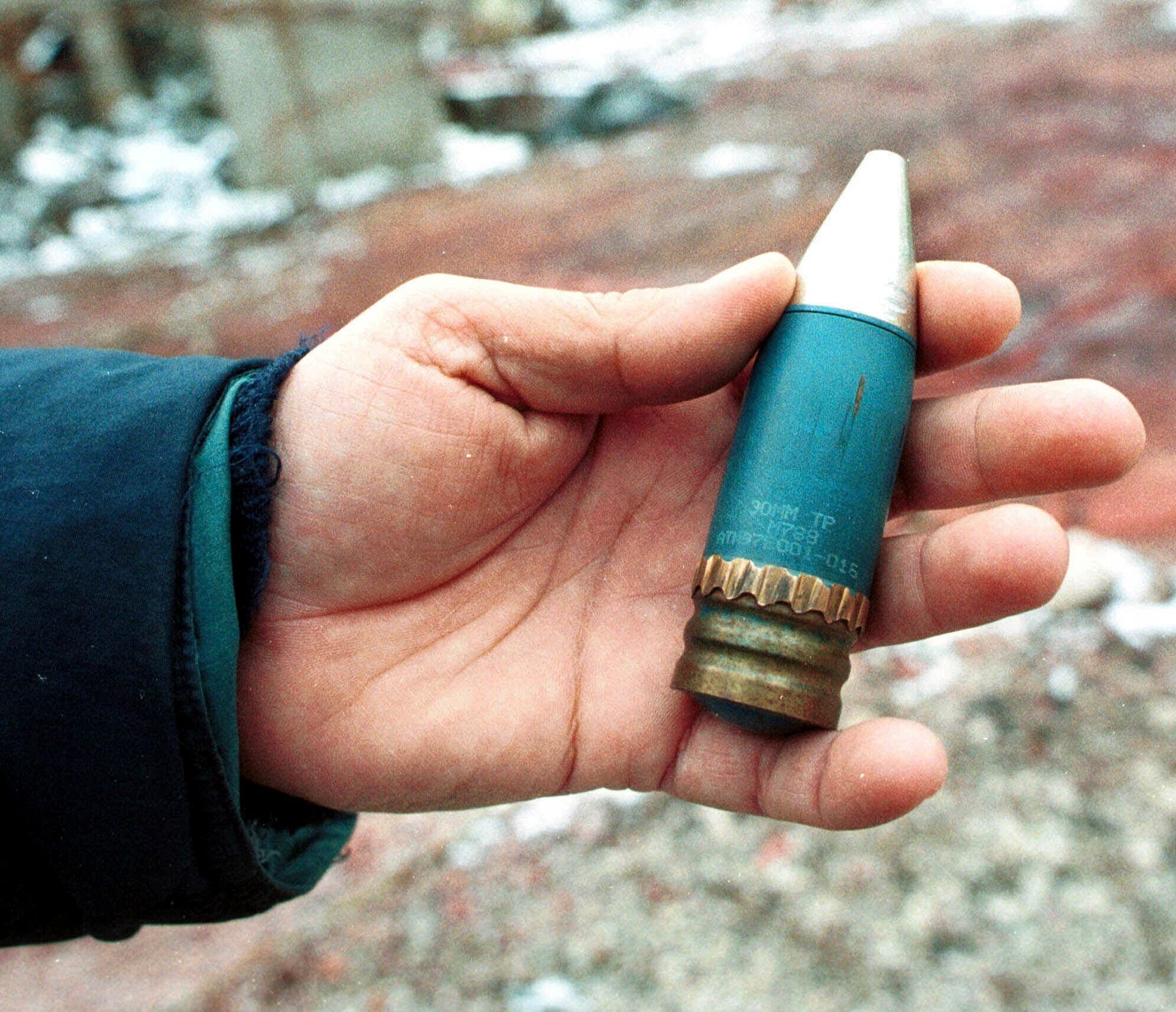WASHINGTON (AP) — Russia threatened to escalate attacks in Ukraine after the British government announced it would provide a type of munition to Ukraine that Moscow falsely claims has nuclear components.
The British defense ministry on Monday confirmed it would provide Ukraine with armor-piercing rounds containing depleted uranium.
Such rounds were developed by the U.S. during the Cold War to destroy Soviet tanks, including the same T-72 tanks that Ukraine now faces in its push to break through a stalemate in the east.
Depleted uranium is a byproduct of the uranium enrichment process needed to create nuclear weapons. The rounds retain some radioactive properties, but they can’t generate a nuclear reaction like a nuclear weapon would, RAND nuclear expert and policy researcher Edward Geist said.
That didn’t stop the Russians from offering a full-throated warning that the rounds were opening the door to further escalation. In the past, they have suggested the war could escalate to nuclear weapons use.
Both the the British ministry and the White House dismissed the Russian accusations. But the ammunition does carry risks even if it’s not a nuclear weapon.
A look at depleted uranium ammunition:
What is depleted uranium?
Depleted uranium is a byproduct of the process to create the rarer, enriched uranium used in nuclear fuel and weapons. Although far less powerful than enriched uranium and incapable of generating a nuclear reaction, depleted uranium is extremely dense — more dense than lead — a quality that makes it highly attractive as a projectile.
“It’s so dense and it’s got so much momentum that it just keeps going through the armor — and it heats it up so much that it catches on fire,” Geist said.
When fired, a depleted uranium munition becomes “essentially an exotic metal dart fired at an extraordinarily high speed,” RAND senior defense analyst Scott Boston said.
In the 1970s, the U.S. Army began making armor-piercing rounds with depleted uranium and has since added it to composite tank armor to strengthen it. It also has added depleted uranium to the munitions fired by the Air Force’s A-10 close air support attack plane, known as the tank killer. The U.S. military is still developing depleted uranium munitions, notably the M829A4 armor-piercing round for the M1A2 Abrams main battle tank, Boston said.
What has Russia said?
President Vladimir Putin on Tuesday warned that Moscow would “respond accordingly, given that the collective West is starting to use weapons with a ‘nuclear component.’”
The British “have lost their bearings,” said Russian Foreign Minister Sergey Lavrov, warning that the munitions are “a step toward accelerating escalation.”
Defense Minister Sergei Shoigu said the announcement was “another step, and there aren’t so many of them left.”
The White House denounced Russia’s claims as disinformation.
“Make no mistake, this is yet another straw man through which the Russians are driving a stake,” U.S. National Security Council spokesperson John Kirby said.
Russia also has depleted uranium munitions and just doesn’t want Ukraine to have them, too, according to a White House official, who was not authorized to comment on the matter and spoke on condition of anonymity.
Pentagon press secretary Air Force Brig. Gen. Pat Ryder said Monday that to his knowledge, the U.S. was not sending depleted uranium munitions from its own arsenal to Ukraine.
What the dangers from depleted uranium?
While depleted uranium munitions are not considered nuclear weapons, their emission of low levels of radiation has led the UN nuclear watchdog to urge caution when handling and warn of the possible dangers of exposure.
The handling of such ammunition “should be kept to a minimum and protective apparel (gloves) should be worn,” the International Atomic Energy Agency cautions, adding that “a public information campaign may, therefore, be required to ensure that people avoid handling the projectiles.
“This should form part of any risk assessment and such precautions should depend on the scope and number of ammunitions used in an area.”
The IAEA notes that depleted uranium is mainly a toxic chemical, as opposed to a radiation hazard. Particles in aerosols can be inhaled or ingested, and while most would be excreted again, some can enter the blood stream and cause kidney damage.
“High concentrations in the kidney can cause damage and, in extreme cases, renal failure,” the IAEA says.
The low-level radioactivity of a depleted uranium round “is a bug, not a feature” of the munition, Geist said, and if the U.S. military could find another material with the same density but without the radioactivity it would likely use that instead.
Depleted uranium munitions were used in the 1991 Gulf War against Iraq’s T-72 tanks and again in the invasion of the country in 2003, as well as in Serbia and in Kosovo. U.S. military veterans of those conflicts have questioned whether their use led to ailments they now face.
Vyacheslav Volodin, the speaker of the Russian parliament’s lower house, said supplies of rounds containing depleted uranium could lead to “a tragedy on a global scale that will primarily affect European countries.”
Volodin said the use of such U.S. ammunition in the former Yugoslavia and Iraq led to “radioactive contamination and a sharp rise in oncological diseases.”




